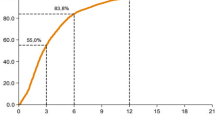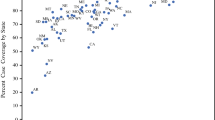Abstract
Objective: Clinical databases have been invented to monitor treatment outcomes, therapies or diseases, often in great detail. The traditional population-based cancer registry has been invented to collect a minimum of information about all incident cancers. Do clinical databases render population-based cancer registers obsolete as sources of cancer cases for epidemiological study?
Methods: We compared the study base of first incident breast cancer cases in Denmark in 1978–1994 known from the national cancer register and from the national clinical database on breast cancer patients. The clinical database is used for monitoring protocoled treatment.
Results: Combining the two data sources we found 48,522 first primary breast cancers in Denmark 1978–1994. Of these, 37,640 were included in both data sources, 2151 were included only in the clinical database, and 8731 were included only in the cancer register. A major part of the difference between the two data sources was due to treatment-focused data collection in the clinical database, and a minor part due to differences in the registration of second primaries, date of diagnosis and invasiveness.
Conclusions: Cancer incidence data are sensitive to registration procedures and definitions. Clinical cancer databases cannot generally replace the traditional cancer register as a reliable data source for incident cancer cases in a national population.
Similar content being viewed by others
References
Parkin DM, Whelan SL, Ferlay J, Raymond L, Young J (eds) (1997) Cancer Incidence in Five Continents, Vol. VII. Lyon: IARC Scientific Publications, No. 143, pp. 1–1240.
Jensen OM, Parkin DM, MacLellan R, Muir CS, Skeet RG (eds) (1991) Cancer Registration Principles and Methods. Lyon: IARC Scientific Publications No. 95, pp. 1–288.
Laszlo J (1985) Health registry and clinical data base technology: with special emphasis on cancer registries. J Chron Dis 38: 67–78.
Kroman N, Wohlfahrt J, Andersen KW, Mouridsen HT, Westergaard T, Melbye M (1997) Time since childbirth and prognosis in primary breast cancer: population based study. BMJ 315: 851–855.
Steele GD Jr, Winchester DP, Menck HR (1994) The National Cancer Data Base. A mechanism for assessment of patient care. Cancer 73: 499–504.
Andersen KW, Mouridsen HT and the Danish Breast Cancer Cooperative Group (1988) A description of the register of the nationwide programme for breast cancer. Acta Oncol 27: 627–647.
World Health Organisation (1957) International Classification of Diseases. Manual of the International Classification of Diseases, Injuries, and Causes of Death (Based on the Recommendations of the Seventh Revision Conference). Geneva: WHO.
Clemmesen J (1965) Statistical Studies in the Aetiology of Malignant Neoplasms. I: Review and Results. Copenhagen: Munksgaard, pp. 1–543.
World Health Organisation (1976) International Classification of Diseases for Oncology, 1st edn. Geneva: WHO, pp. 1–131.
Danish National Board of Health (1997) Cancer Incidence in Denmark 1994. Copenhagen: Danish National Board of Health, pp. 1–96.
Storm HH (1988) Completeness of cancer registration in Denmark 1943–66 and efficacy of record linkage procedures. Int J Epidemiol 17: 44–49.
Østerlind A, Jensen OM (1985) Evaluation of registration of cancer cases in Denmark 1977. Preliminary evaluation of registration of cases by the cancer registry and the National Patient Register (In Danish). Ugeskr Laeger 147: 2483–2488.
Holm NV, Hauge M, Jensen OM (1982) Studies of cancer aetiology in a complete twin population: breast cancer, colorectal cancer and leukaemia. Cancer Surv 1: 17–32.
Swerdlow AJ, Douglas AJ, Vaughan Hudson G, Vaughan Hudson B (1993) Completeness of cancer registration in England and Wales: an assessment based on 2,145 patients with Hodgkin's disease independently registered by the British National Lymphoma Investigation. Br J Cancer 67: 326–329.
Hawkins MM, Swerdlow AJ (1992) Completeness of cancer and death follow-up obtained through the National Health Service Central Register for England and Wales. Br J Cancer 66: 408–413.
Author information
Authors and Affiliations
Rights and permissions
About this article
Cite this article
Rostgaard, K., Holst, H., Mouridsen, H.T. et al. Do clinical databases render population-based cancer registers obsolete? The example of breast cancer in Denmark. Cancer Causes Control 11, 669–674 (2000). https://doi.org/10.1023/A:1008928204121
Issue Date:
DOI: https://doi.org/10.1023/A:1008928204121




